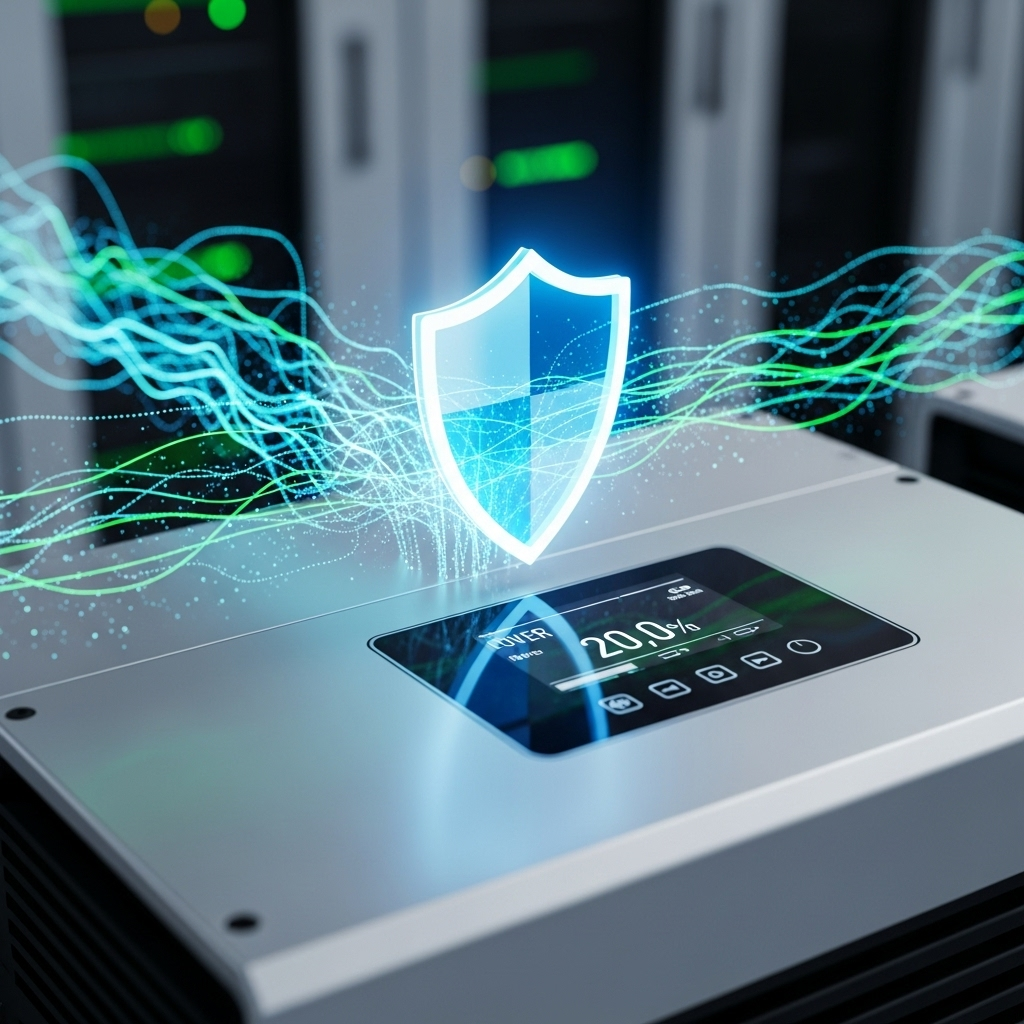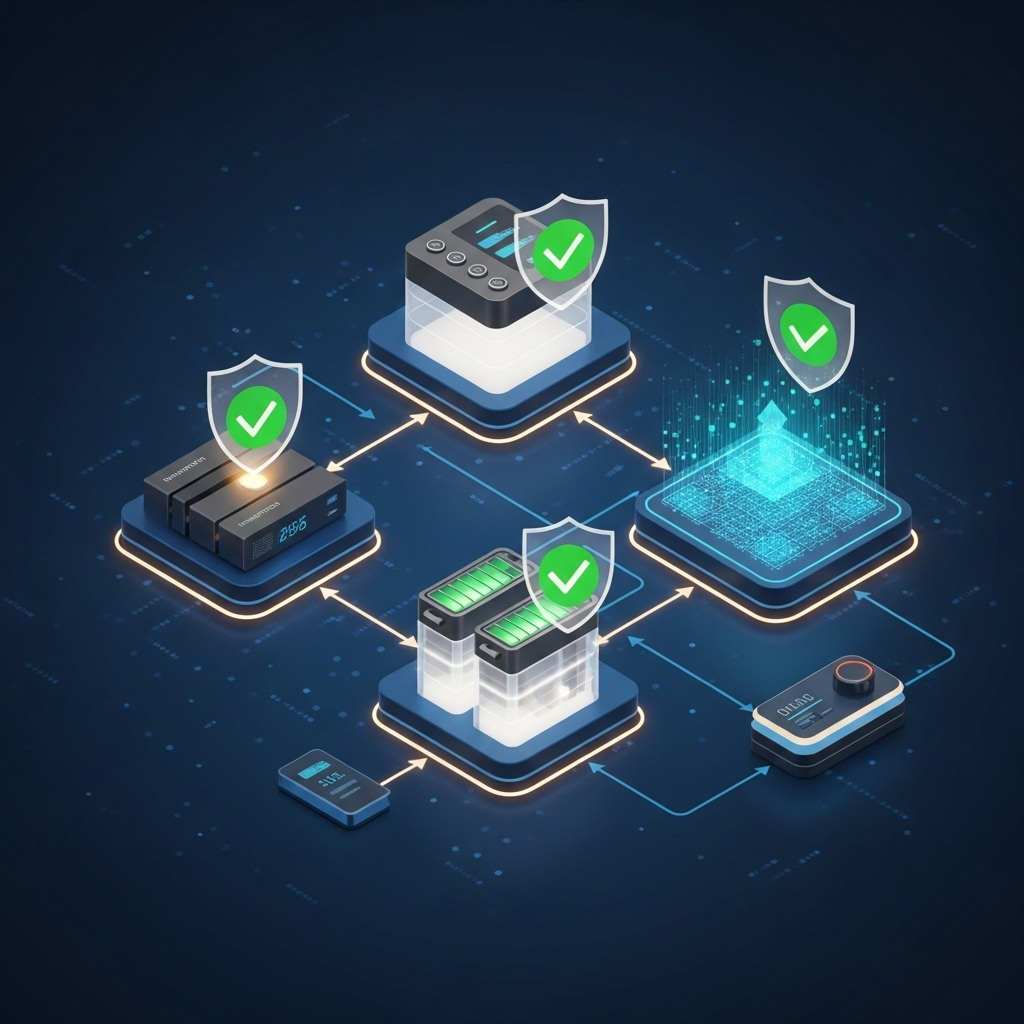The ability to monitor and manage your solar inverter from anywhere is a significant advantage. It allows for quick diagnostics, performance optimization, and crucial firmware updates without a technician visit. Yet, this convenience introduces a digital gateway to your energy system. Understanding the real security risks and implementing robust safeguards is vital for protecting your investment and maintaining energy independence.
The Double-Edged Sword of Remote Access
Remote control capabilities transform how we interact with energy systems. They shift system management from a manual, on-site task to a flexible, digital process. This evolution brings both powerful benefits and serious considerations.
The Appeal: Convenience and Efficiency
Modern solar inverters are equipped with digital communication interfaces. This connectivity enables remote supervision and maintenance, such as installing software updates. As noted in the Grid Codes for Renewable Powered Systems report, the behavior of inverter-based resources depends almost entirely on controller software. This programmability allows for easy adjustments to voltage or frequency responses, a task much harder with traditional synchronous machines. For system owners, this translates to higher uptime, optimized performance, and lower maintenance costs.
The Inherent Risks: Opening a Digital Door
Any device connected to a network is a potential target. The primary risks associated with remote inverter control include unauthorized access, the uploading of malicious firmware, and data interception. A compromised inverter could lead to a system shutdown, grid instability, or even physical equipment damage. The software update function itself is a potential attack vector. Therefore, it must be secured against unauthorized third-party interference on both the sending and receiving ends.

Common Myths About Inverter Security Debunked
Misconceptions about cybersecurity can lead to a false sense of security. Addressing these myths is the first step toward building a truly resilient system.
| Myth | Reality |
|---|---|
| 'My small home system is not a target.' | Attackers often target smaller, less secure systems to aggregate them into a 'botnet'. This network of compromised devices can then be used to launch a larger, coordinated attack on the grid infrastructure. Every connection point is a potential vulnerability. |
| 'A strong password is all I need.' | While a strong, unique password is a good start, it is not enough. Passwords can be stolen, guessed, or cracked. A comprehensive security strategy involves multiple layers of protection, including multi-factor authentication and strict access controls. |
| 'Firmware updates are risky, so I should avoid them.' | Avoiding updates is more dangerous. Manufacturers release firmware updates to patch newly identified security holes, improve performance, and add features. Failing to update leaves your system exposed to known vulnerabilities that attackers can exploit. |
Essential Safeguards for Secure Remote Inverter Control
Protecting your solar energy system requires a multi-layered approach. Implementing several safeguards creates a defense-in-depth strategy that is much harder for an attacker to penetrate.
Securing the Communication Channel
All data transmitted between your inverter and a remote monitoring platform must be encrypted. Technologies like SSL/TLS create a secure tunnel, scrambling the information so it cannot be read if intercepted. For higher security applications, some systems employ data diodes. A project funded by the U.S. Department of Energy developed a data diode that allows data to flow out for monitoring but physically blocks any inbound digital traffic, effectively preventing remote attacks.
Robust Authentication and Authorization
Authentication verifies the identity of a user, while authorization determines what actions they can perform. Multi-Factor Authentication (MFA) is a critical tool, requiring a second form of verification (like a code from a mobile app) in addition to a password. Furthermore, Role-Based Access Control (RBAC) ensures that users have only the permissions necessary for their jobs. For example, a system owner might have view-only access, while a certified technician has the authority to apply firmware updates.
Verifying Software Integrity
How do you know a firmware update is legitimate and hasn't been tampered with? The solution is digitally signed firmware. Before an update is released, the manufacturer uses a unique digital key to 'sign' it. Your inverter can then verify this signature before installation. This process ensures the update is authentic and has not been altered, preventing the installation of malicious code.
The Role of Monitoring in Proactive Security
Continuous monitoring does more than track energy production; it is a powerful security tool that provides visibility into your system's health and operational integrity.
Real-Time Anomaly Detection
A robust monitoring system establishes a baseline for normal operation. It can then flag deviations that may indicate a problem. For instance, sudden changes to inverter settings, repeated failed login attempts, or unusual data traffic can trigger alerts for immediate investigation. A multi-layered energy management system developed with support from the DOE can even detect and identify the location of cyberattacks before they cause an impact.
Logging and Auditing
Comprehensive logs provide an electronic paper trail of all activities related to your inverter. They record who logged in, when they logged in, and what changes they made. In the event of a security incident, these logs are invaluable for forensic analysis to understand what happened and prevent it from recurring.
Balancing Performance and Security
Effective security complements system performance. By closely watching your system's output and efficiency, you can spot anomalies that might indicate a security breach. Understanding the key metrics of your system is fundamental. For a detailed overview of what to track, you can consult this ultimate reference on solar storage performance. This knowledge helps you identify deviations that could signal a deeper issue.
Building a Resilient Energy Future
Remote inverter control is a powerful capability that is central to the modern, digitized energy grid. The convenience it offers does not have to come at the cost of security. By moving past common myths and implementing practical, layered safeguards—from encrypted communication and strong authentication to signed firmware and vigilant monitoring—you can confidently manage your solar energy system. This proactive stance ensures your system remains reliable, efficient, and secure, empowering you with true energy independence.
Disclaimer: This content is for informational purposes only and does not constitute professional security or financial advice. Always consult with a qualified cybersecurity professional and your system installer to implement the appropriate security measures for your specific situation.
Frequently Asked Questions
How often should I update my inverter's firmware?
You should apply firmware updates as soon as they are made available by the manufacturer, after confirming their legitimacy. These updates often contain critical security patches that protect your system from newly discovered threats. Many modern systems can be configured for automatic updates or will notify you when an update is ready.
What is a 'data diode' and do I need one for my home system?
A data diode is a hardware device that allows data to travel in only one direction. It is a high-security tool that physically prevents any incoming connections, making remote hacking nearly impossible. While common in critical infrastructure and defense, it is generally not necessary for a typical residential solar installation where standard encryption and authentication protocols provide sufficient protection.
Can a hacker really shut down my power through the inverter?
If an inverter's security is compromised, it is technically possible for an unauthorized user to remotely shut it down. This is why multi-layered security is so important. Using strong passwords, enabling multi-factor authentication, and ensuring your system uses encrypted communications and signed firmware updates dramatically reduces this risk.





Leave a comment
All comments are moderated before being published.
This site is protected by hCaptcha and the hCaptcha Privacy Policy and Terms of Service apply.